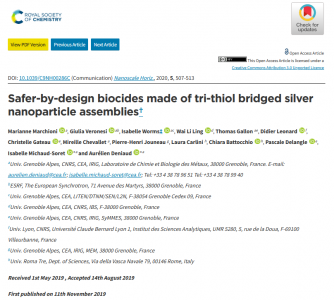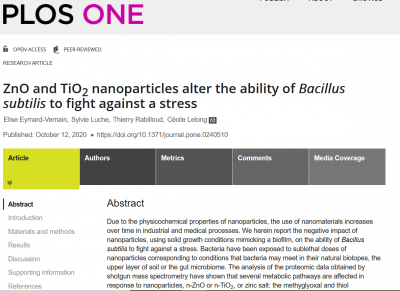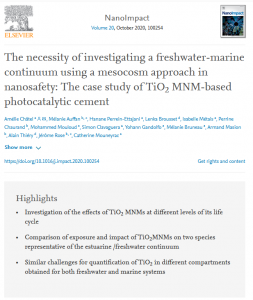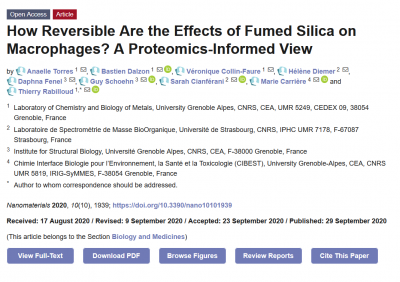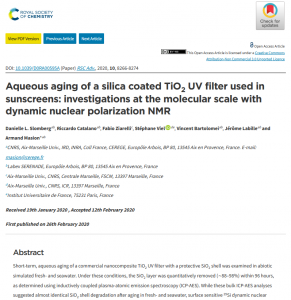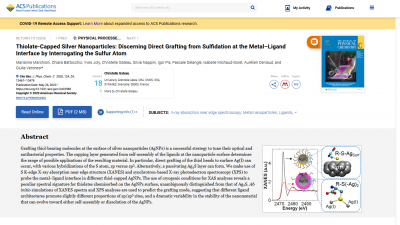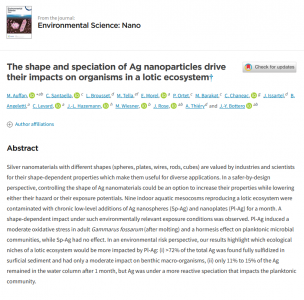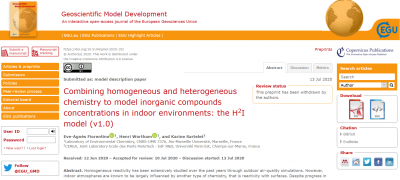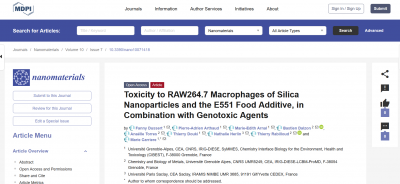Silver nanoparticles (AgNPs) are efficient biocides increasingly used in consumer products and medical devices. Their activity is due to their capacity to release bioavailable Ag(I) ions making them long-lasting biocides but AgNPs themselves are usually easily released from the product. Besides, AgNPs are highly sensitive to various chemical environments that triggers their transformation, decreasing their activity.
Read MoreDue to the physicochemical properties of nanoparticles, the use of nanomaterials increases over time in industrial and medical processes. We herein report the negative impact of nanoparticles, using solid growth conditions mimicking a biofilm, on the ability of Bacillus subtilis to fight against a stress.
Read MoreProduction of Manufactured Nanomaterials (MNMs) has increased extensively due to economic interest in the current years. However, this widespread use raises concern about their impact on human and environment.
Read MoreSynthetic amorphous silica is one of the most used nanomaterials, and numerous toxicological studies have studied its effects. Most of these studies have used an acute exposure mode to investigate the effects immediately after exposure. However, this exposure modality does not allow the investigation of the persistence of the effects, which is a crucial aspect of silica toxicology, as exemplified by crystalline silica.
Read MoreShort-term, aqueous aging of a commercial nanocomposite TiO2 UV filter with a protective SiO2 shell was examined in abiotic simulated fresh- and seawater.
Read MoreGrafting thiol-bearing molecules at the surface of silver nanoparticles (AgNPs) is a successful strategy to tune their optical and antibacterial properties. The capping layer generated from self-assembly of the ligands at the nanoparticle surface determines the range of possible applications of the resulting material.
Read MoreSilver nanomaterials with different shapes (spheres, plates, wires, rods, cubes) are valued by industries and scientists for their shape-dependent properties which make them useful for diverse applications. In a safer-by-design perspective, controlling the shape of silver nanomaterials could be an option to increase their properties while lowering either their hazard or their exposure potentials.
Read MoreHomogeneous reactivity has been extensively studied over the past years through outdoor air-quality simulations. However, indoor atmospheres are known to be largely influenced by another type of chemistry, that is reactivity with surfaces.
Read MoreSynthetic amorphous silica (SAS) is used in numerous applications and included in many daily products to which humans are exposed via inhalation, ingestion, or skin contact.
Read MoreInteractions between polysaccharides, specifically between cellulose and hemicelluloses like xyloglucan (XG), govern the mechanical properties of the plant cell wall. This work aims to understand how XG molecular weight (MW) and the removal of saccharide residues impact the elastic modulus of XG–cellulose materials.
Read More








